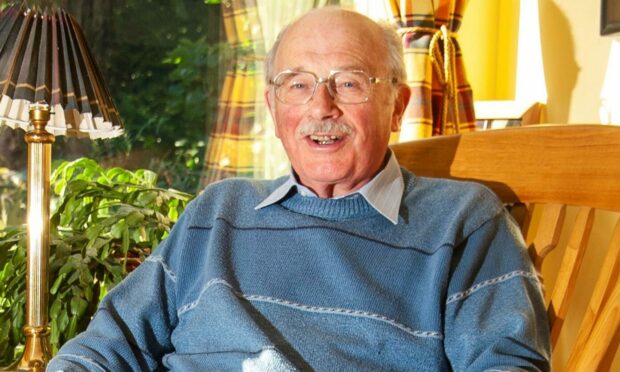A former Aberdeen and Shetland doctor who survived a German torpedo attack during the war has died.
Robert (Bob) Andrew, who was born in Shetland and spent his childhood in Dundee then Kinneff, was 95.
In 1940 he was accepted for the Children’s Overseas Reception Board, which evacuated UK school children overseas.
Bob and his brother Theo sailed from Liverpool on the SS Volendam on August 29.
Attacked at sea
At 11pm the next day, the vessel was hit by two torpedoes and everyone had to abandon ship.
One person died and the rest got away on 18 lifeboats. They were rescued and taken to Greenock.
Bob and his brother then returned to the family home in Kinneff.
Robert Alexander Andrew was born at Dunrossness, Shetland, on August 13, 1926.
Move to Dundee
His father was a Church of Scotland minister and the family moved to Dundee when he was four.
In 1933, the family moved to Kinneff and Bob finished his schooling in Stonehaven.
From 1944 onwards, he studied medicine at Marischal College, Aberdeen University, and then finished his training at Aberdeen Royal Infirmary.
Return to Shetland
He then spent nine months as a house surgeon at ARI and three months as a locum on Yell before enlisting in the RAF in 1952 on a three-year short-service commission.
As a pilot officer, he volunteered to work overseas and undertook a course in tropical medicine before being sent to the Middle East to RAF Khormaksar in Aden.
His duties included visiting small RAF radar and communication outposts in Yemen and Oman every month, a trip of more than 1000 miles each way and lasting several days.
Insect control
While there he obtained permission to join two civilian pilots who were involved in the control of locusts.
They travelled inland, visiting several small nomadic communities and searching for locusts.
They once landed at an oasis and were entertained in the tent of a nomadic chief, who produced beautiful cold beer from a paraffin-powered fridge.
In 1952, Bob was promoted to Flight Lieutenant and posted to RAF Khartoum in the Sudan.
Suez Canal
Two years later he was promoted to Squadron Leader (acting) and posted to Abyad in the Canal Zone of Egypt.
It was here he met his future wife, Flying Officer Sheila Bourke, who was a midwife in the Princess Mary Royal Airforce Nursing Service.
The couple married on October 30, 1954 and Bob completed his commission at RAF Middle Wallop.
General practitioner
They then moved to Yell, Shetland, where Bob began his career as a general practitioner and where their daughter, Carolyn, was born.
A move to Mansfield followed, where son Peter was born before Bob took a practice in Leven, East Yorkshire, in 1962, the same year son Neil was born.
In September 1973, the family emigrated to New Zealand, where Bob initially took a position in a practice in Ashburton, then one in Picton, both on South Island.
They never really settled, and in March 1976, the family returned to the UK via Tahiti, Los Angeles, Vancouver and the Rockies.
Retiral
Bob then did a number of locum jobs, before getting the post of GP in Middleton St George, just outside Darlington in County Durham. He remained there until retiring in 1991.
On retiring, Bob and Sheila moved to the Lake District, enjoyed cruise holidays, many around the Baltic, and Bob took up carpentry and furniture making.
In 2012 they moved to Cornwall for three years, before going full circle and returning to Middleton St George.
They spent their last few years in Middleton Hall Retirement Village, initially living independently, then later receiving wonderful care in Middleton Oaks.
Bob was predeceased by Sheila in November, 2018.
